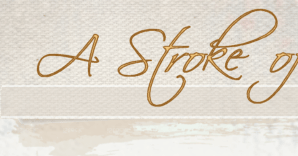 |
|
 05-09-2007, 04:17 PM
05-09-2007, 04:17 PM
|
#21
|
|
Juried Member
Joined: Nov 2006
Location: Norway
Posts: 129
|
I think it is quite obvious that they add digital paint effects to the photo, like shown in this thread, then have it printed as giclees and the artists gives them a final touch, to add textures.
__________________
Grethe
|
|
|

|
 05-10-2007, 08:46 AM
05-10-2007, 08:46 AM
|
#22
|
|
SOG Member
'02 Finalist, PSA
'01 Merit Award, PSA
'99 Finalist, PSA
Joined: Jul 2001
Location: Greensboro, NC
Posts: 819
|
Some of the professional photographers in our area have started painting over giclees and offering them as "the most exciting new artistic expression in two hundred years" or some such claptrap. They usually heavily paint the environments and avoid the faces. The result is somewhat like the photo novelty booths on the Atlantic City boardwalk where you stick your head through a hole in a piece of plywood and are captured as a flapper, gangster, cowboy or whatever.
One of my students saw one of these guys in the art history section of the library, and he explained that he was going to learn how to paint like the old masters, so he could paint over the giclees even better and make real portraits. Good luck, pal.
Several years ago a local gallery that also brokered portraits completely retooled their business and began to trade in the Asian low-end work. The first time I saw their ad, I felt like a buggy whip maker who had just seen a car for the first time.
After the initial shock, I began to realize that we face the same global market forces that afflict any other work. There may be a few marketing techniques and counter arguments that we can bring to bear to balance the discussion, but beyond a point, we can't keep from happening what is going to happen. We can only make our case as best we can, and hope that certain clients will value the process and the contact with the artist that commissioning work entails.
I realized I have two choices: curl up into a fetal position, or dedicate myself to getting better every day and try to get the work out where someone can see it. I hope there will be a future for what I do, but attempting to control it is like standing on the shore and commanding the tide not to come in. If I let myself obsess, it saps my energy.
One real resource we all have is here, where we help each other continue to improve. If we go out, let's go out swingin' for the fence.
Good luck to you and me--TE
__________________
TomEdgerton.com
"The dream drives the action."
--Thomas Berry, 1999
|
|
|

|
 05-10-2007, 02:24 PM
05-10-2007, 02:24 PM
|
#23
|
|
SOG Member
Joined: Aug 2003
Location: Southboro, MA
Posts: 1,028
|
Quote:
|
Originally Posted by Grethe Angen
I think it is quite obvious that they add digital paint effects to the photo, like shown in this thread, then have it printed as giclees and the artists gives them a final touch, to add textures.
|
That's what it sounded like to me too. I've got to wonder at how archival this approach is -- there might be oil paint on top, but how does that middle giclee ink layer affect the long term adhesion of the paint to the canvas? I've seen a giclee on canvas where a strip along the frame was wiped off by housecleaners cleaning the frame (no idea whether there was any kind of cleaning product on the cloth?)... but the concept of painting over that and representing it as a 'true' oil painting seems suspect to me . . .
|
|
|

|
|
Currently Active Users Viewing this Topic: 1 (0 members and 1 guests)
|
|
|
 Posting Rules
Posting Rules
|
You may not post new threads
You may not post replies
You may not post attachments
You may not edit your posts
HTML code is Off
|
|
|
|
|
|
All times are GMT -4. The time now is 05:47 PM.
|

